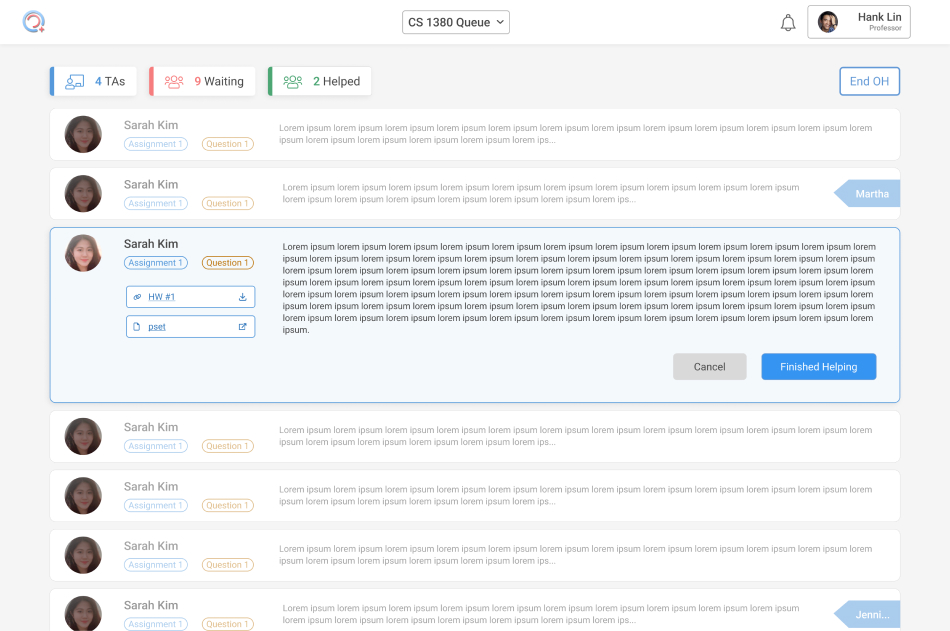
Queue Me In
Queue Me In, created by Cornell Digital Tech & Innovation, hopes to make office hours an enjoyable experience for both TAs and students and change how messy and inefficient they can be.
Functions
User Research, Low-Hi Fidelity Ideation, Product Thinking
Team
1 PM, 1 TPM, 6 Devs, 2 Designers, 1 PMM
Timeline
- Fall 2023
01 - Problem
What is Queue Me In?
QMI supports different kinds of OHs, from queue style for one-on-one support to discussion style to engage in questions as a group! QMI currently supports students at Cornell and Stanford.
Who are QMI users?
TAs: Use QMI to facilitate OHs.
Students: Use QMI to join and participate in OHs.
What can we improve?
The team was looking to host more courses and react to changes post COVID, as QMI had come to its peak during the pandemic and largely pandered to online OHs. To accomplish this we ended up pursuing the question:
How can we support in-person, queue style office hours?
02 - Brainstorming
Storyboarding
I began with initial storyboarding + brainstorming on solving to support a new form of OHs, particularly thinking through feasibilities, best options, and highest priority for what I could accomplish in one semester.
 Thought through different modes of OHs and new formats QMI could support.
Thought through different modes of OHs and new formats QMI could support.
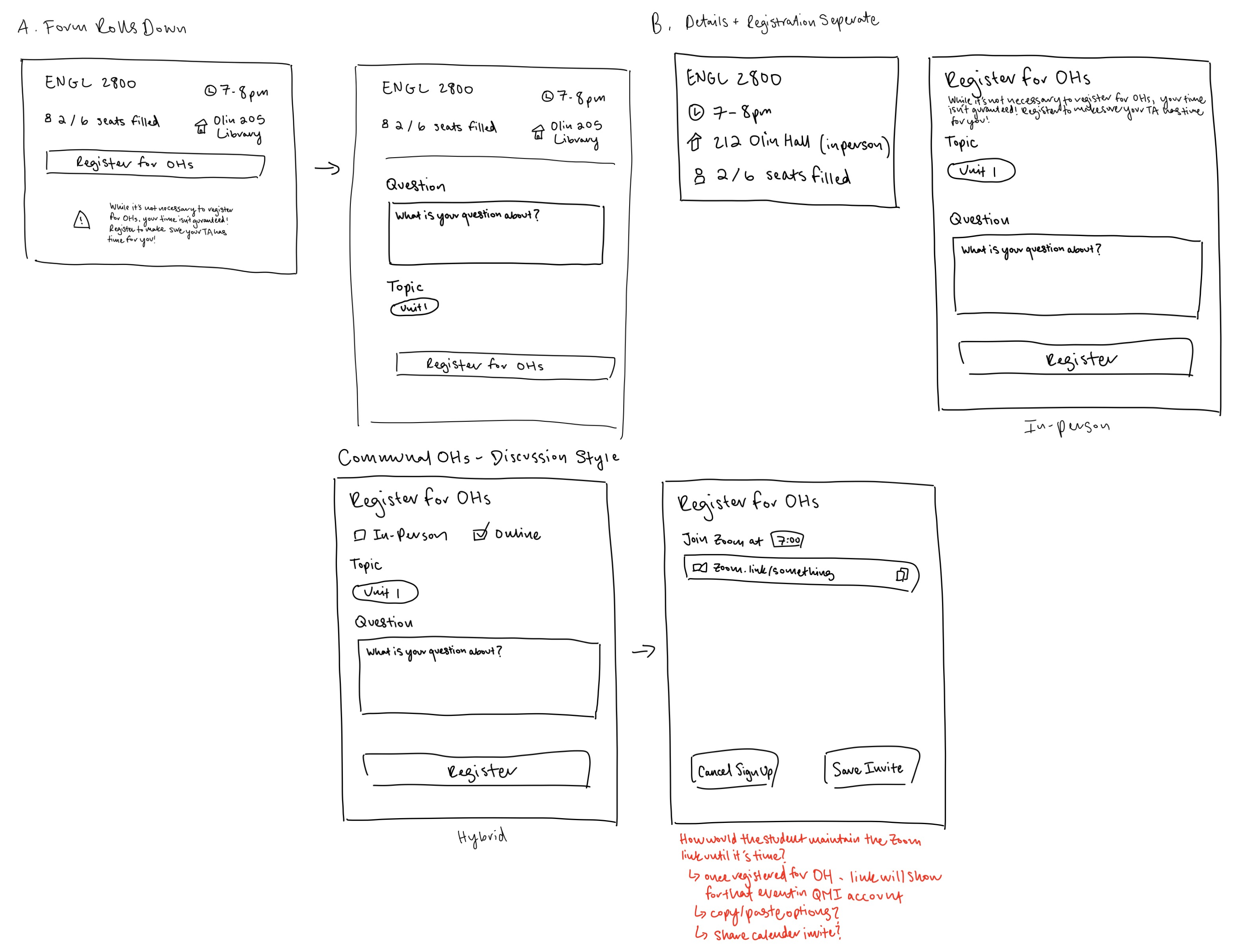 I initially iterated through some ideas such as pre-registration for in-person OHs or “discussion” style OHs.
I initially iterated through some ideas such as pre-registration for in-person OHs or “discussion” style OHs.
Yet, as I thought about pre-registration more I began to realize how many more flows needed to be created to support this, making it more complicated.
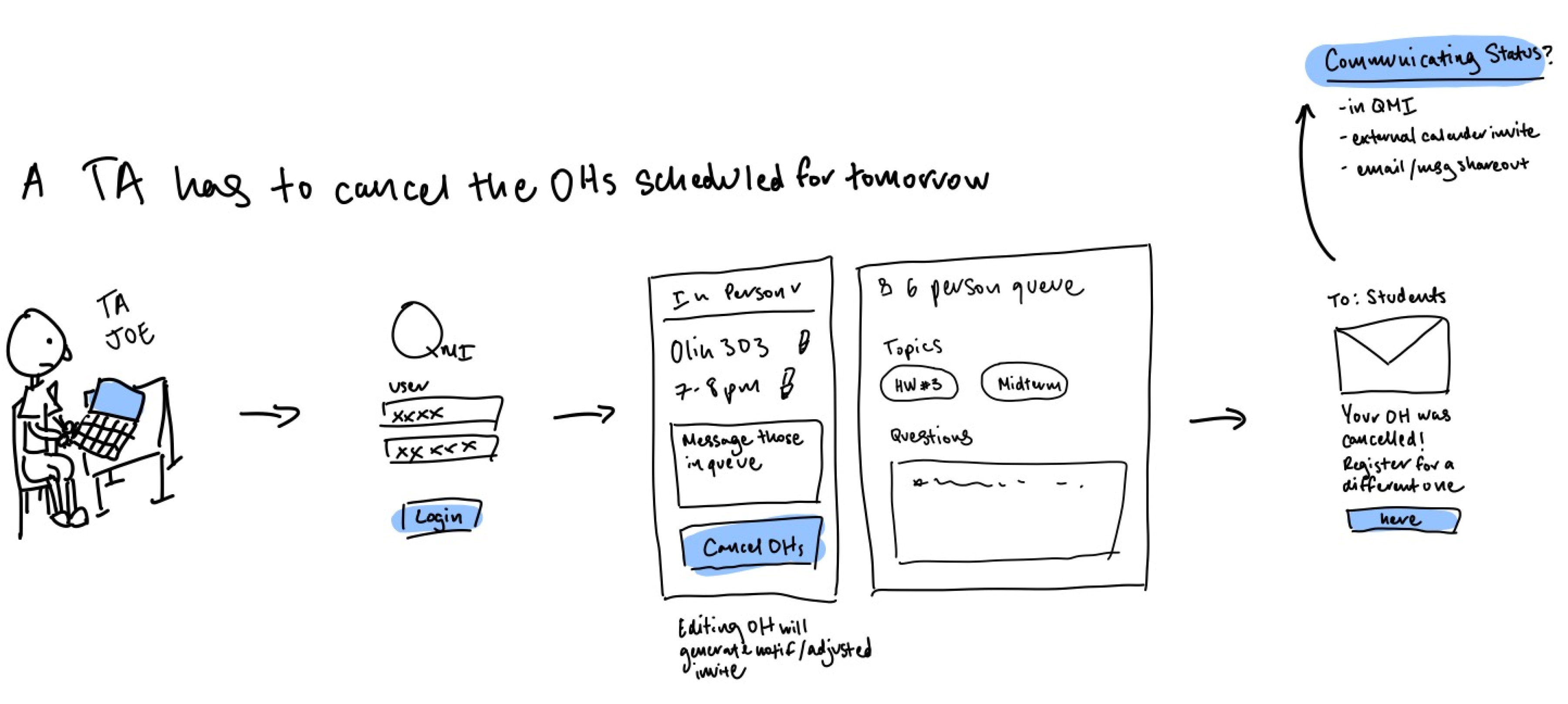 Should a TA need to cancel an OH students pre-registered for, more flows need to be supported.
Should a TA need to cancel an OH students pre-registered for, more flows need to be supported.
Research
I began to realize I was attempting to solve multiple different use cases and opportunities all in one feature, and needed to narrow my focus. So, I returned back to the research we'd conducted and focused on a couple key insights to prioritize.
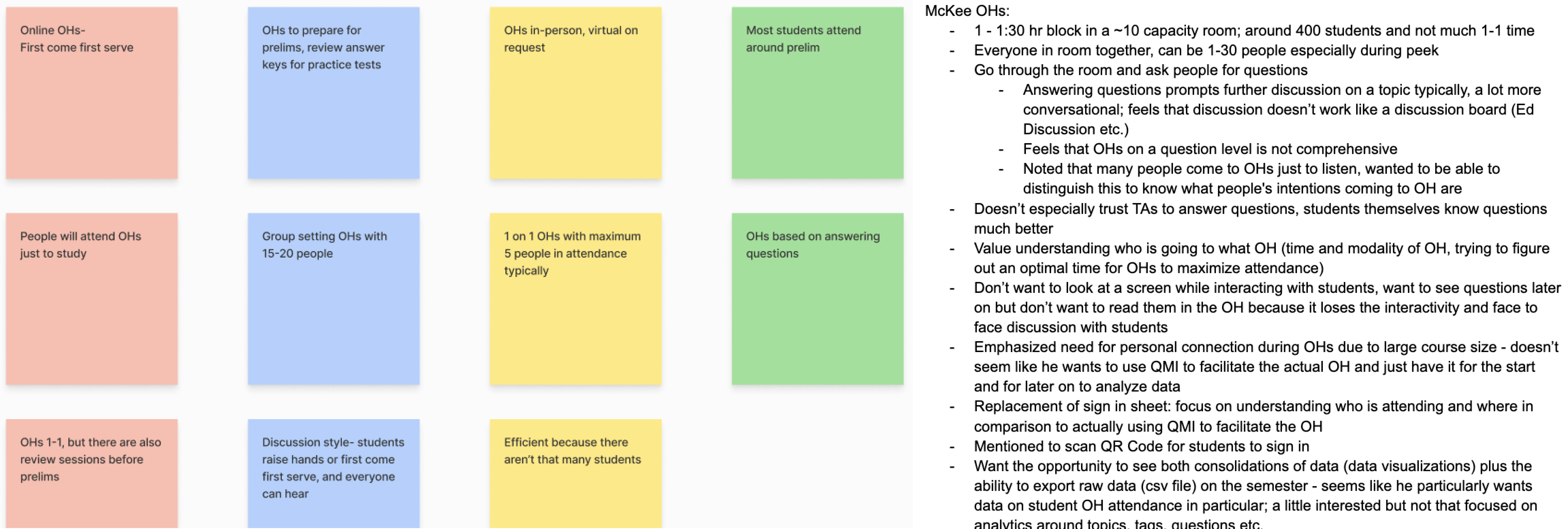 We intereviewed professors, TAs, and other students to see where we could improve OHs for them. In particular, we focused on reaching users in non-STEM classes.
We intereviewed professors, TAs, and other students to see where we could improve OHs for them. In particular, we focused on reaching users in non-STEM classes.
From this research, I decided to focus on In-Person, Queue style OHs- meaning 1-on-1 OHs for individual assistance. I centered this experience around a couple key insights from what we'd learned in terms of our facilitators (professors and TAs) and students.
Professors and TAs:
1. TAs want to focus on their students during OHs- QMI should help facilitate, but focus shouldn't be on a screen.
2. Professors don't have a good gauge of attendance during in-person OHs and want to know popular times to optimize scheduling.
3. TAs can lose track of who to help when OHs get packed.
Students:
1. Need for OHs can appear quickly and suddenly.
2. OHs can become very frustrating because it becomes unclear who gets help next.
3. For some packed classes, students will wait for a long time before OHs begin to have a good spot in queue.
03 - Low-Fidelity Ideation
Spot in Queue
I began to think through how a student's spot in the queue could be calculated.
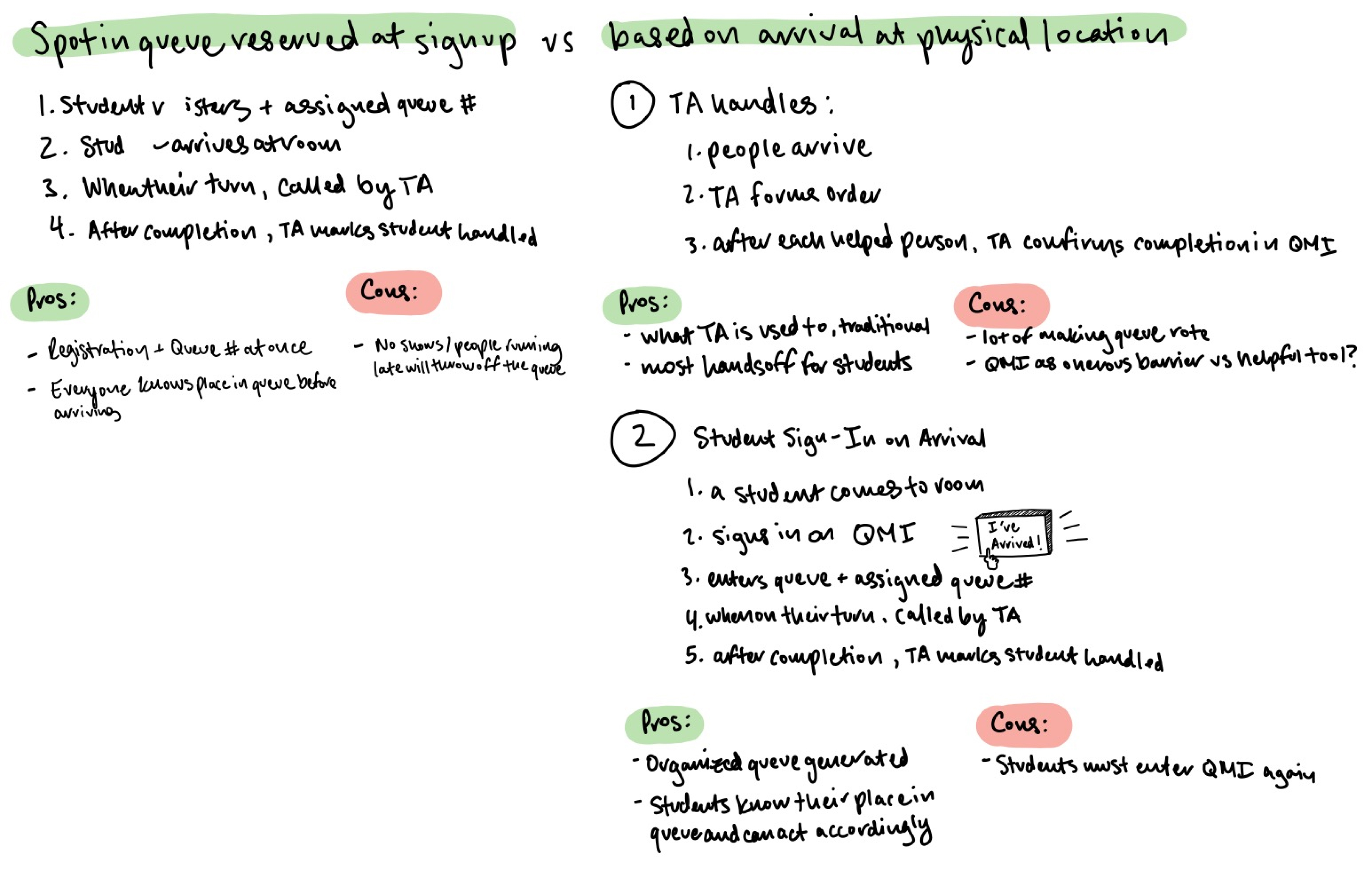 Considered 3 options for queue.
Considered 3 options for queue.
Based on Student Sign-In on Arrival ✅
I decided to emphasize equity and accessability. Oftentimes students won't know of a need for OHs until closer to the time, making pre-registration inaccessible for some. While the option of the TA handling once students arrive closely mimics what currently occurs, this option doesn't optimize using QMI to help the queue creation process.
I'd been hesitant to sign-in on arrival because I felt this would be an annoying roadblock to really kicking off OHs, but I realized that most students needing individual help would have the work on their computer and need to open it anyways.
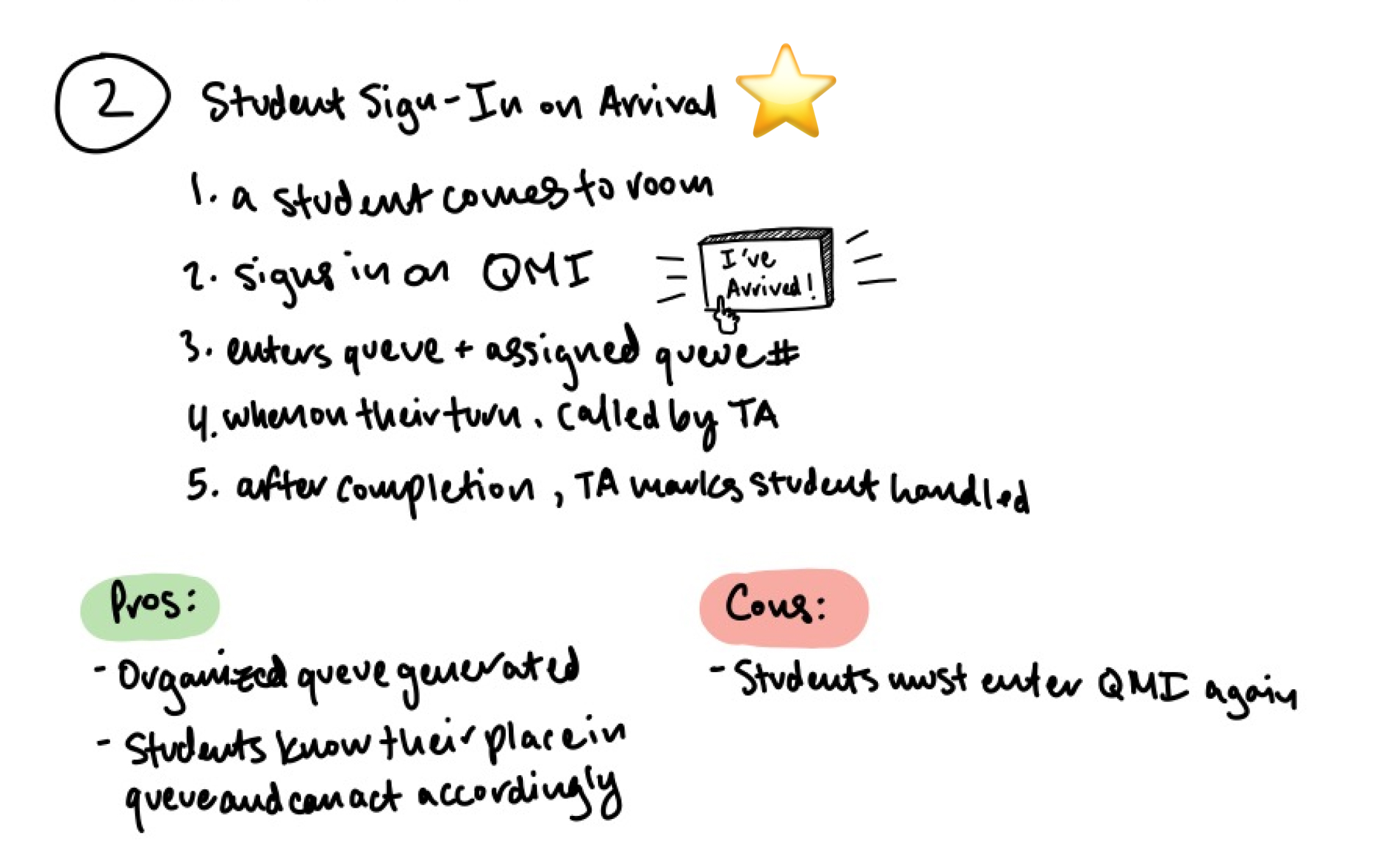
Queue Opening Time
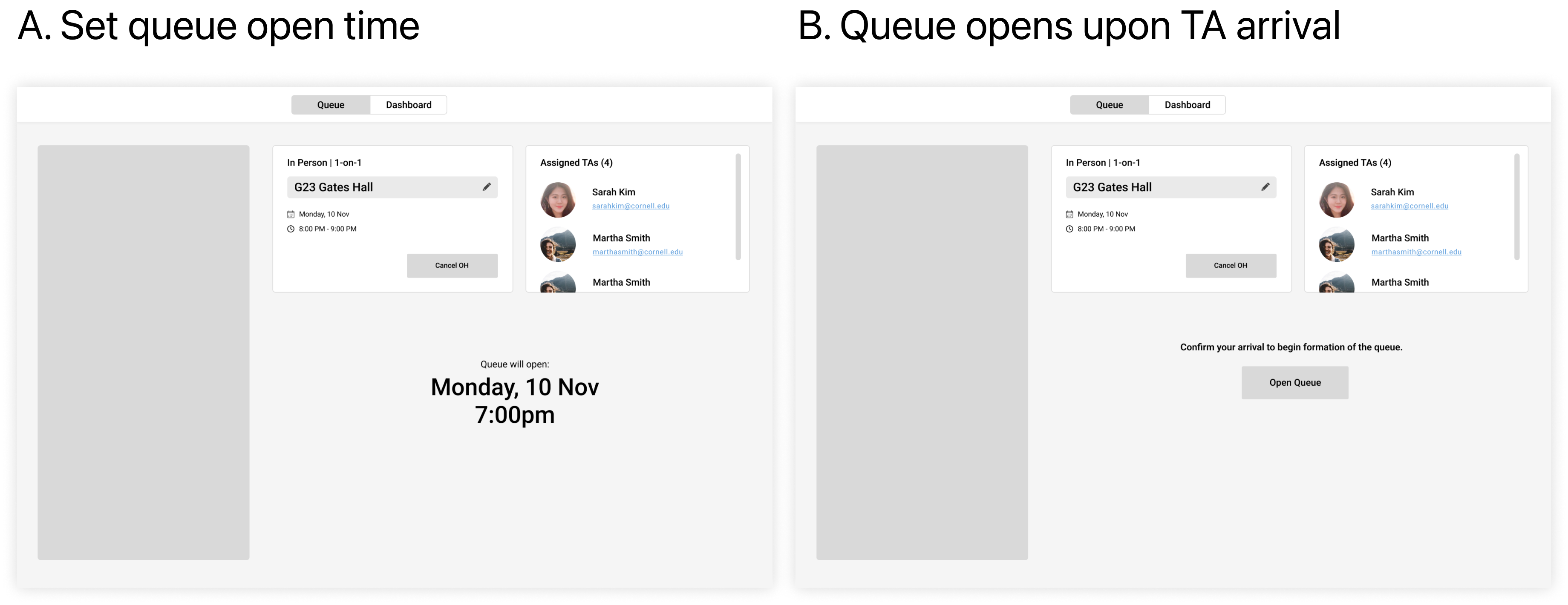 Questioned when queue would be open to sign into.
Questioned when queue would be open to sign into.
B. Queue opens on TA arrival ✅
- Solve issues of inequity opening beforehand might cause
- Ensure no further work would have to be done to handle cases where changes to the OH were made after students had already registered
- Possibility of issues- students arriving before others, but unable to sign-in before them
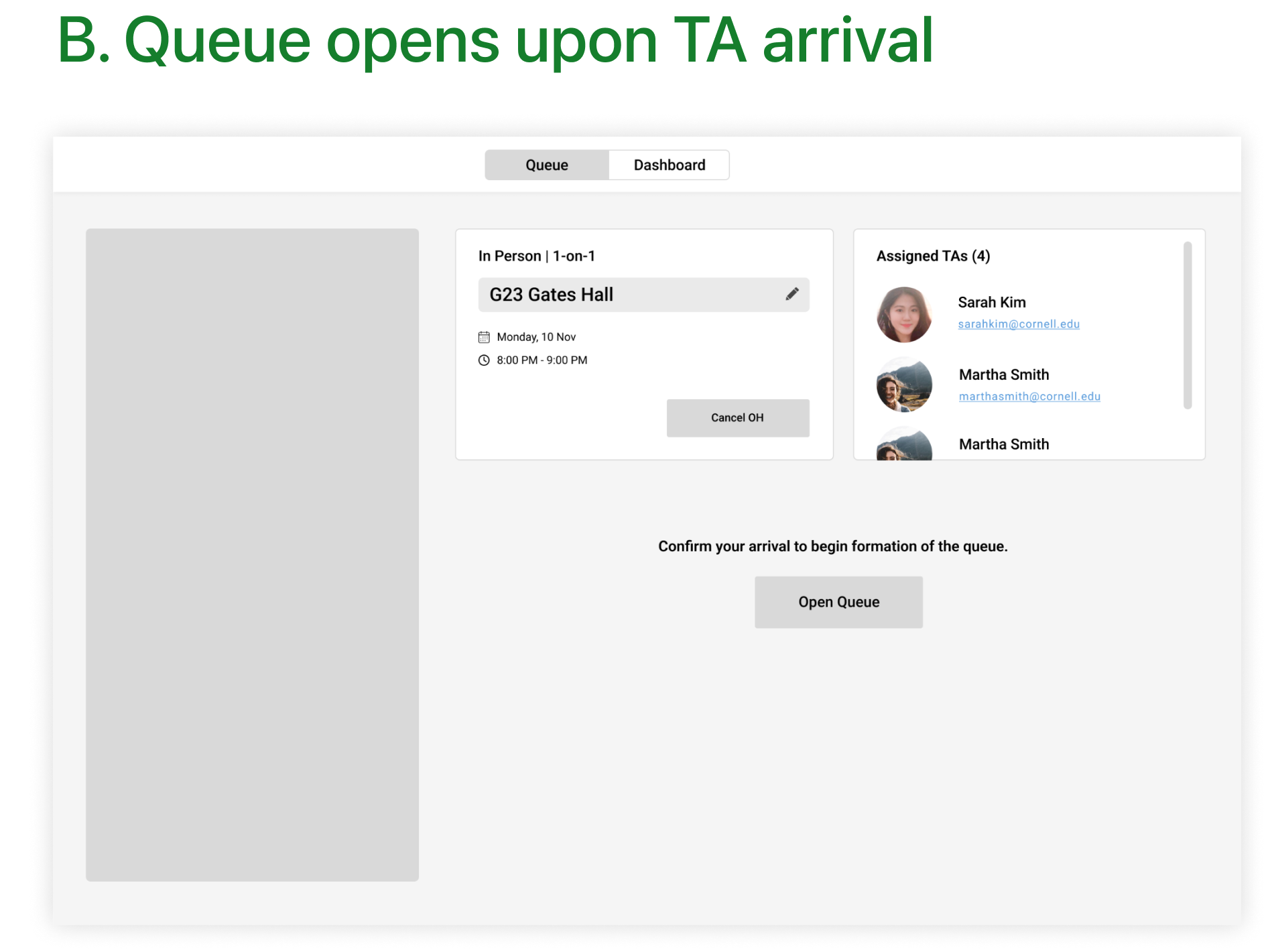
Initial Visual Exploration
I began to visually explore what it would look like for a TA to start / facilitate an OH.
 Ideas included a dashboard leading to an individual page for each student.
Ideas included a dashboard leading to an individual page for each student.
While I’d focused on the queue as being set in stone where QMI would help create it based upon order of registration, realized from the input who’d been on the team longer its better to create QMI more as a tool to organize the queue, but leave actual decisions + queue-making to the TAs.
So, I pivoted.
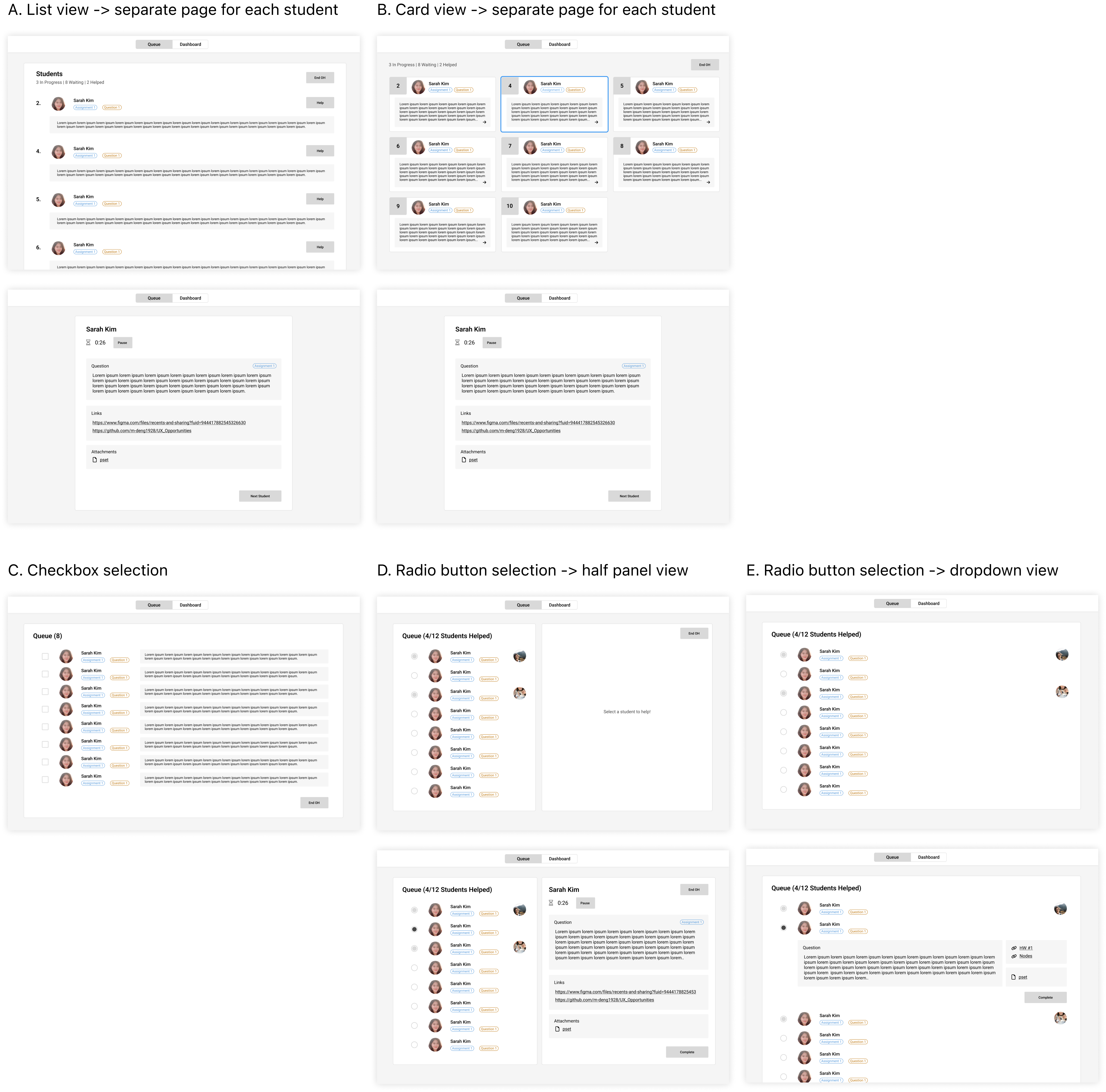 Many different iterations with different interactions were created.
Many different iterations with different interactions were created.
C + E ✅
I tried to find that balance where QMI is helpful + engaging student interaction; don’t want a TA stuck to the screen, but want to encourage QMI use during the OH as something helpful. I also balanced between the different iterations the desire to have all queue in view as much as possible.
- Combined radio button selection method + other TA visual tracking with visual layout of checkbox iteration (shows question on the full list)
- Radio button semantically most correct
- Can have full view + preview questions at once
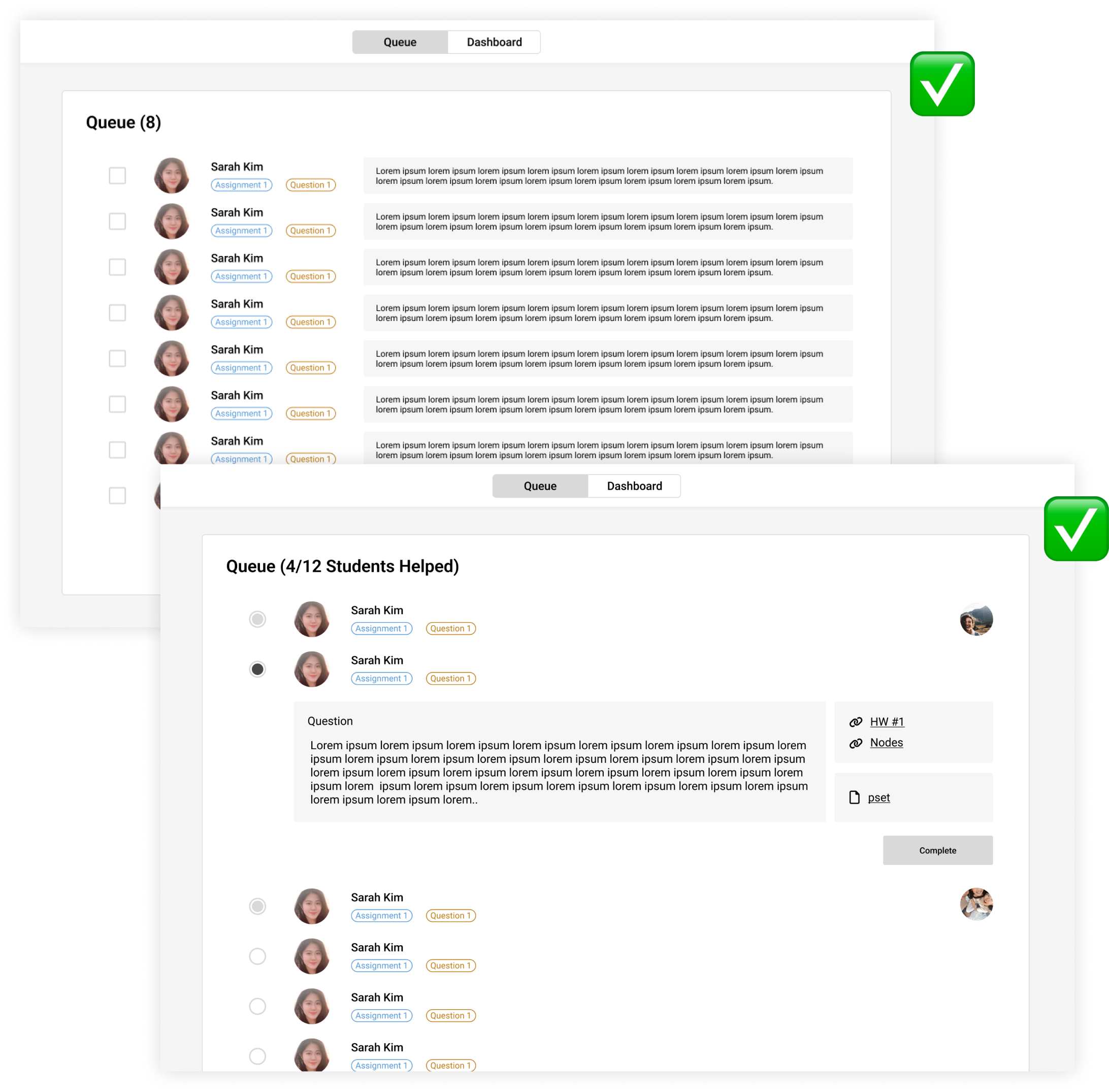
04 - Hi-Fidelity Ideation
UI Iteration
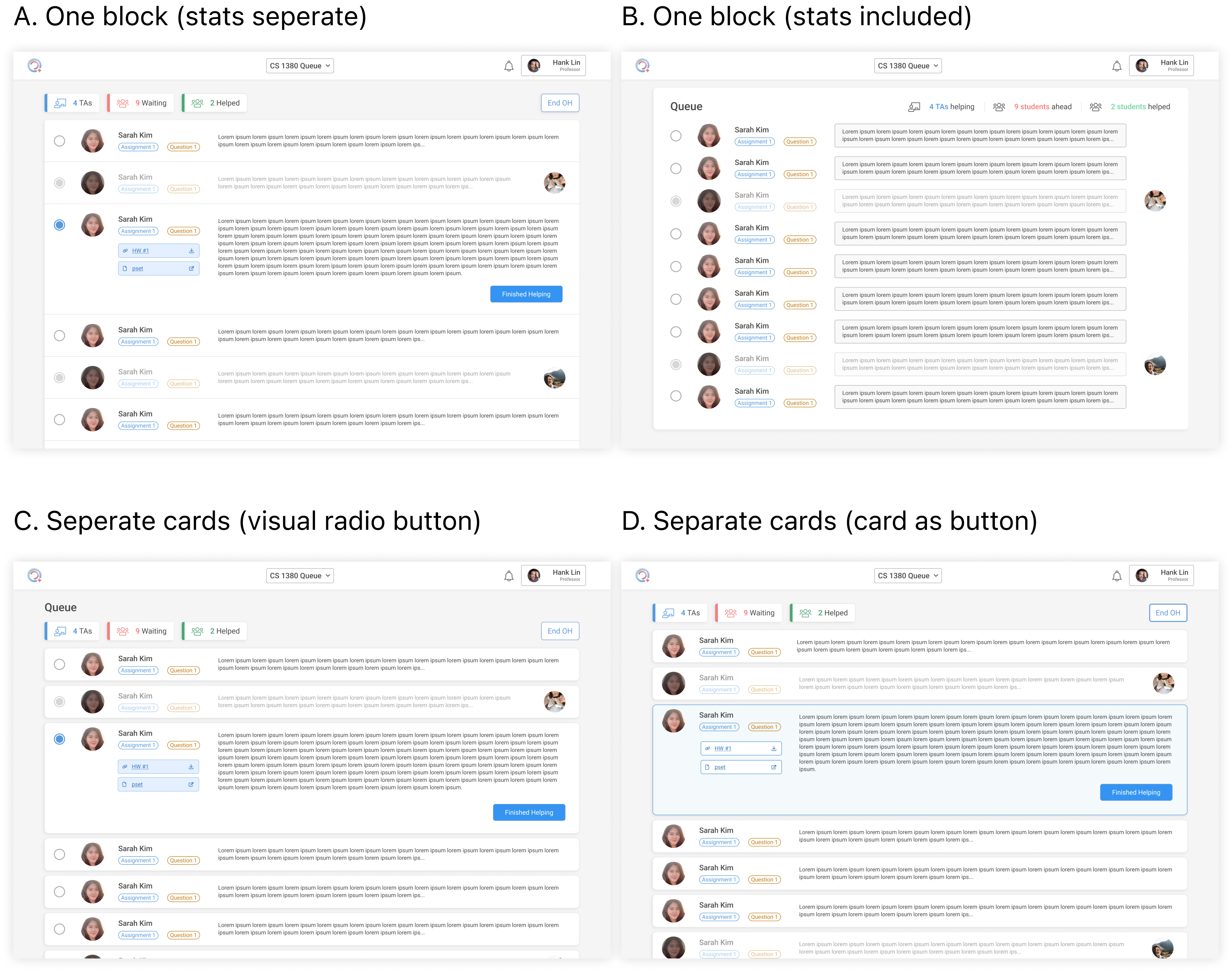 Thought through dashboard visualizations.
Thought through dashboard visualizations.
D. Seperate cards, card as button ✅
- Sleeker without radio button visual
- Individual cards visually corresponds to dropdown function
- Encourages interaction (larger selection space!)
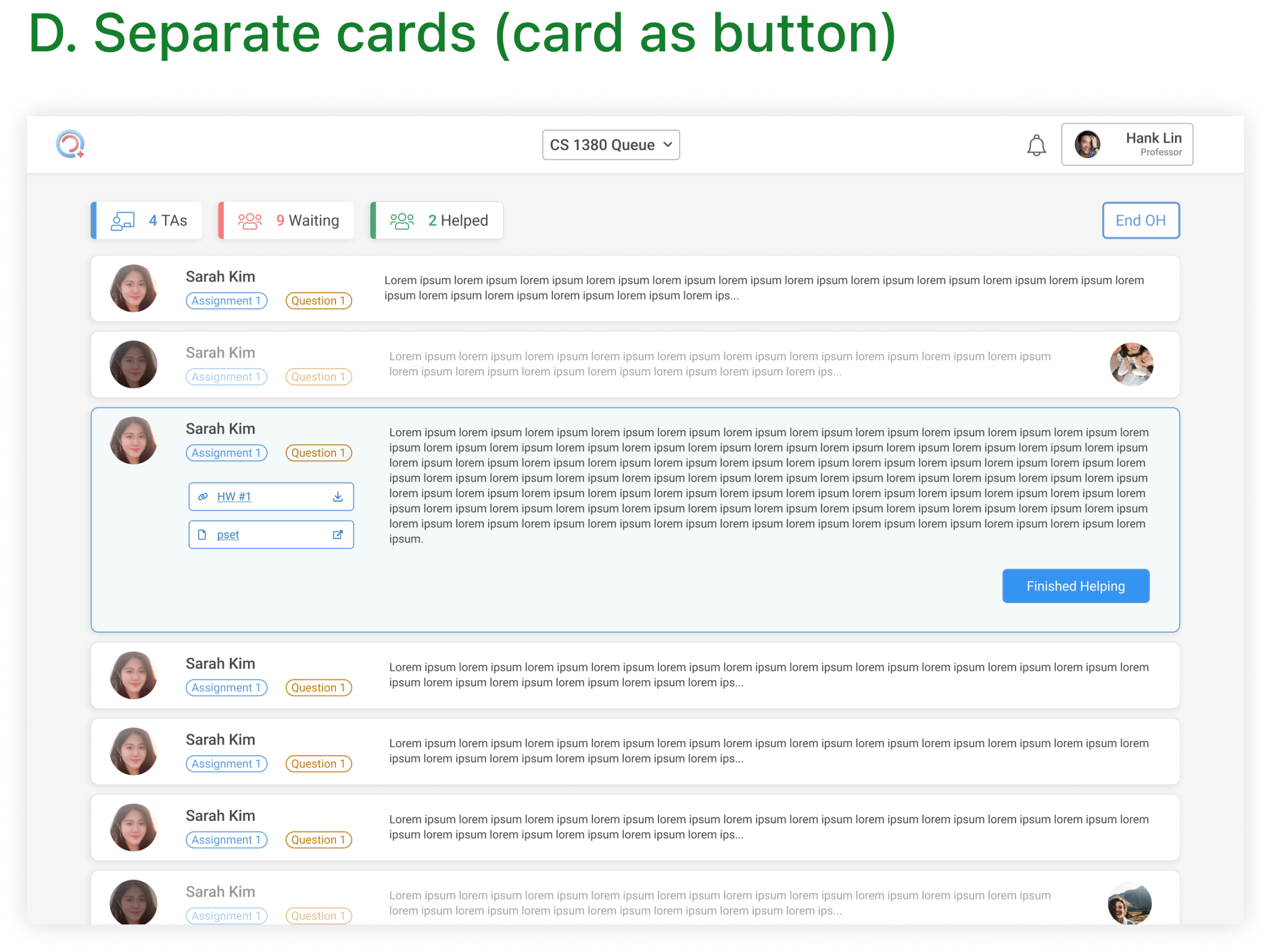
Inactive Student UI
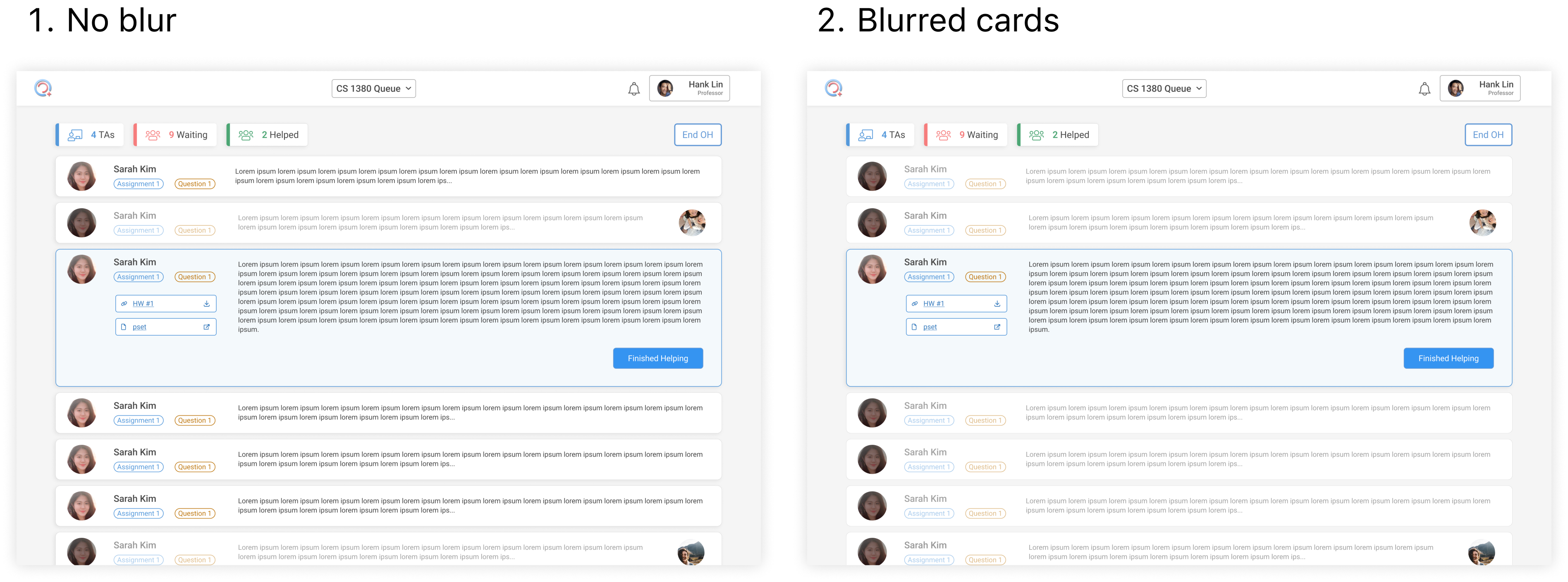 Should all other students be blurred, or just those who are already being helped?.
Should all other students be blurred, or just those who are already being helped?.
2. Blurred cards ✅
- 👁️ Less visually busy: encourages focus
- Need to include some sort of exit option if other tiles shaded out ➡️
- Should adjust TA indicators for more clarity ➡️

05 - Final Flow
Hosting an OH
 The final flow for a TA starting an OH and helping a student.
The final flow for a TA starting an OH and helping a student.
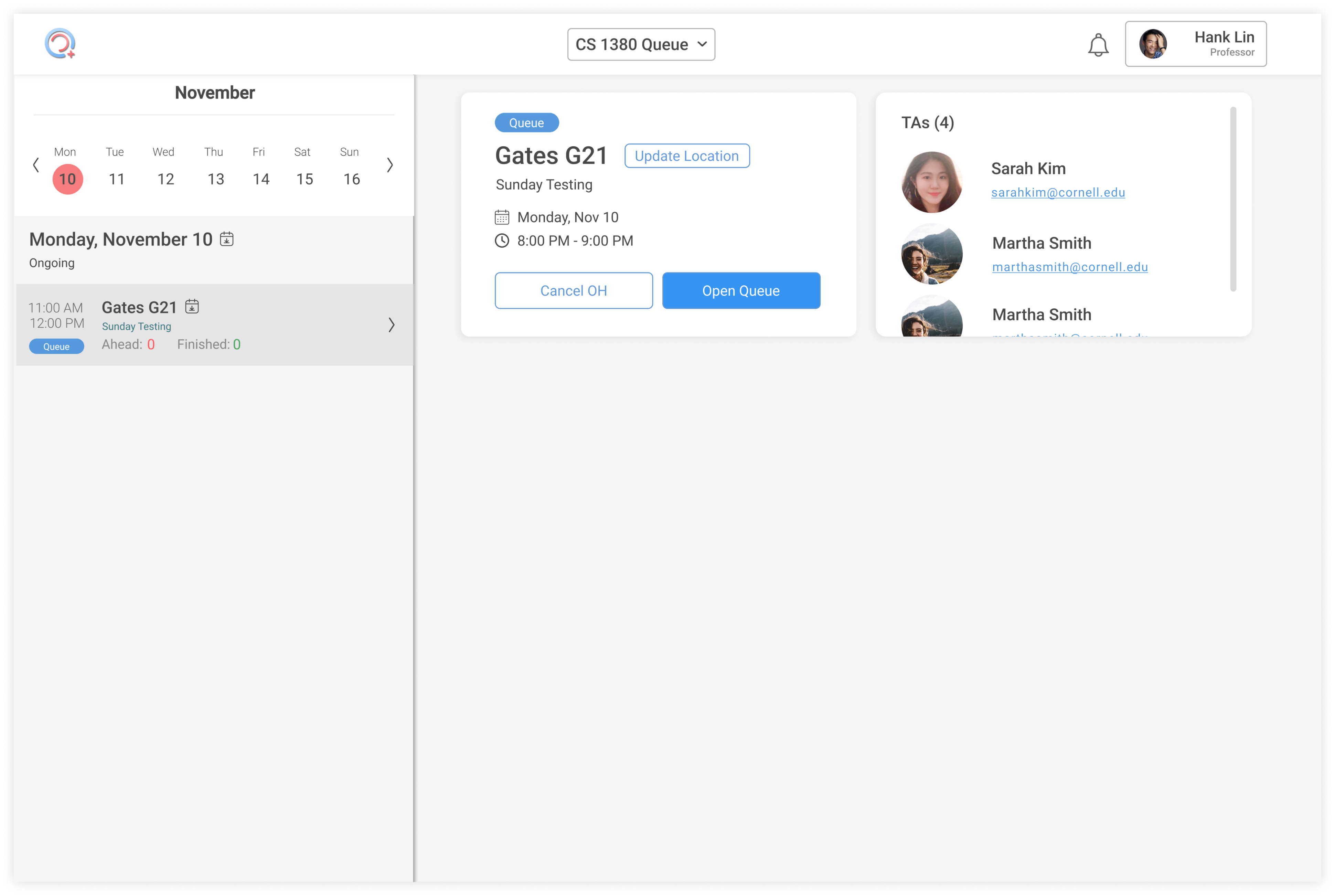
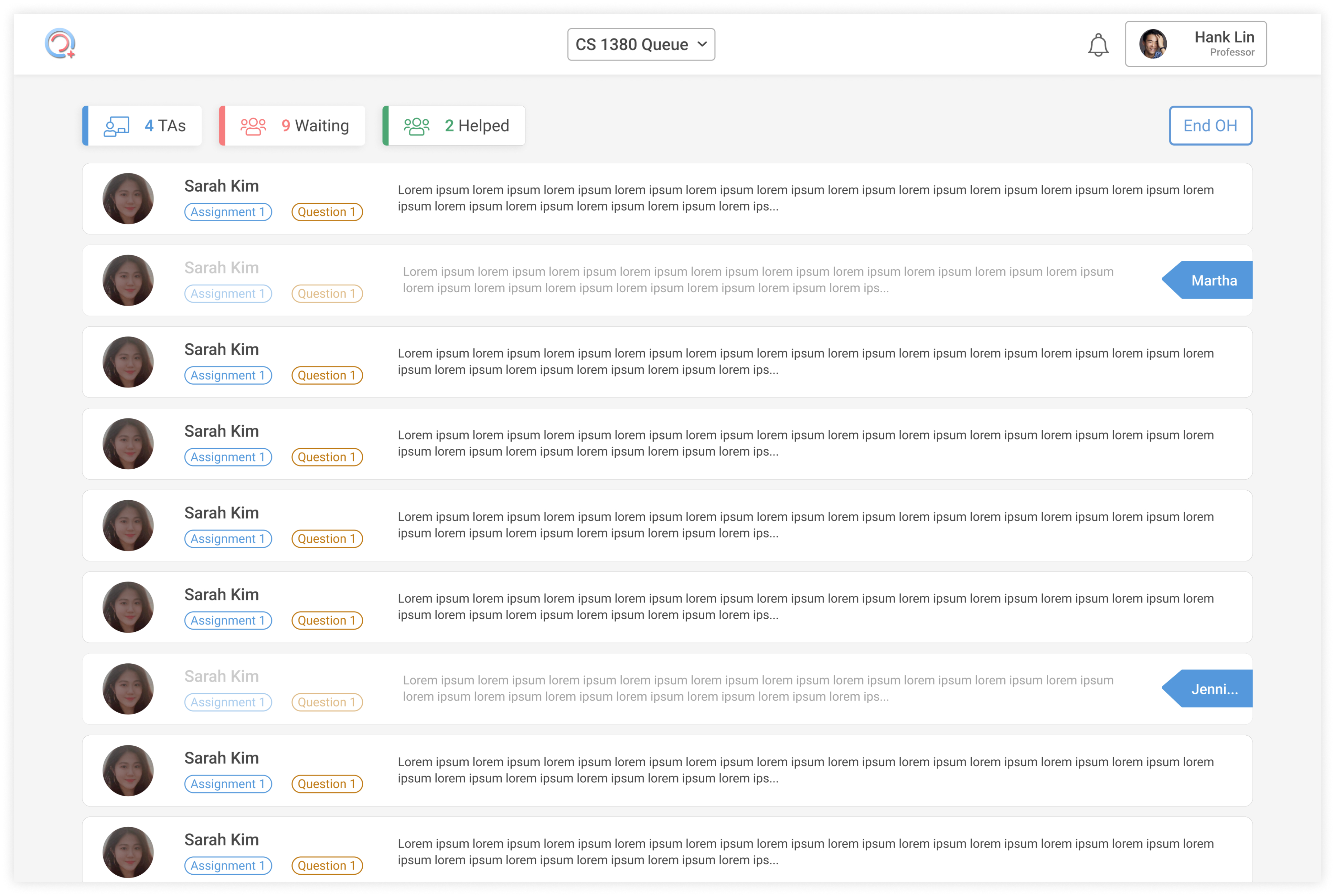
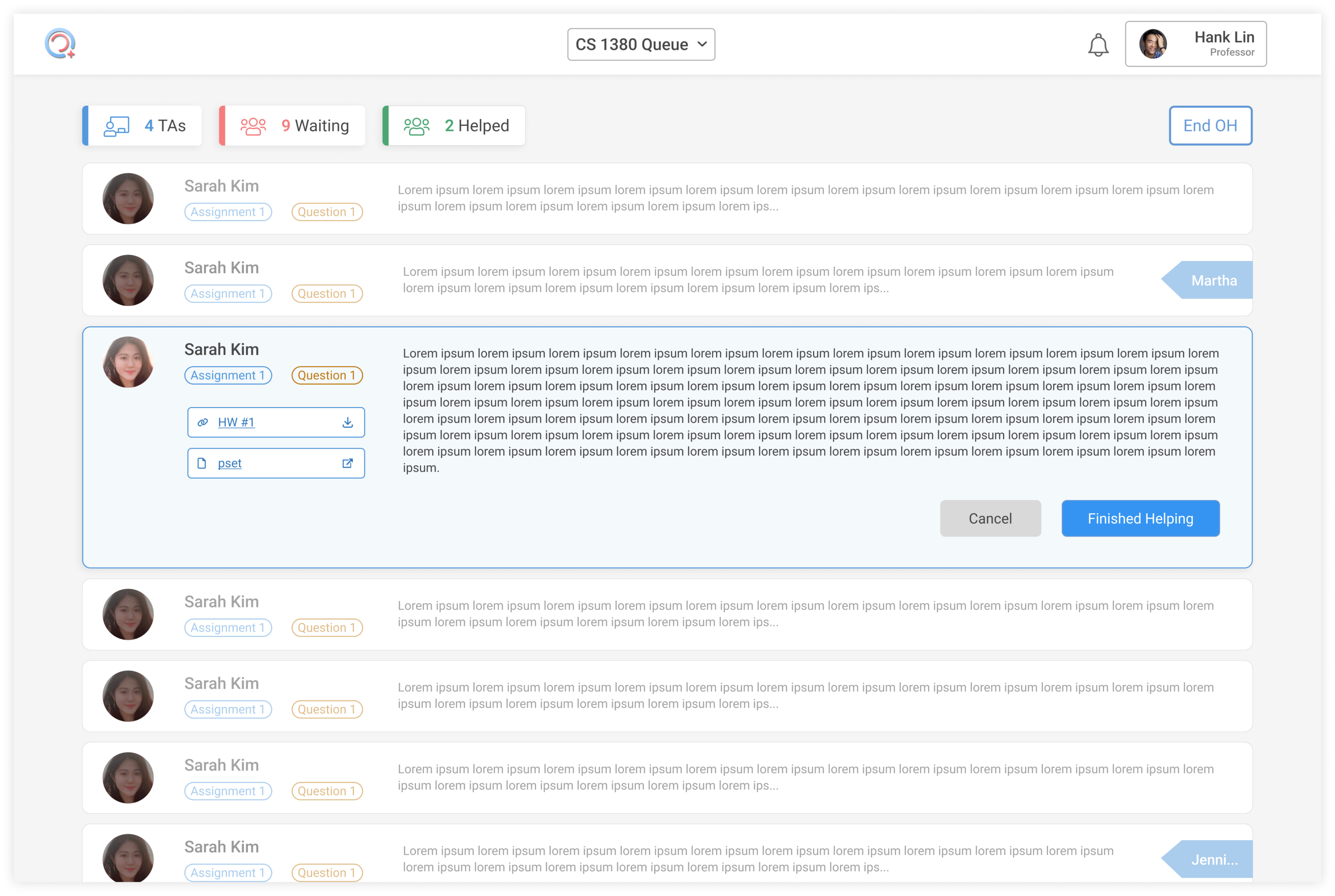
06 - Reflection
Hitting the Ground Running...
I was joining the team for a single semester and knew I wanted to accomplish a lot, so I threw myself into understanding the product and integrating myself into the team and problem space.
Something else I truly loved about this project was the opportunity to really brainstorm and think creativiely. I was able to lean on the power of working within low-fidelity to think broadly, which gave me the chance to just design before I began to limit myself.